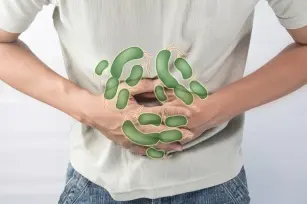
Food poisoning is a common ailment related to the malfunctioning of the digestive system, the previous consumption of food that caused this disorder. Food is usually infected by microbes, bacteria. In case of poisoning, standard symptoms are very common, such as: vomiting, abdominal pain, diarrhoea. How to deal with food poisoning? What treatment to take? What medical measures to use?
Food poisoning symptoms
Food poisoning usually has its main causes in infection with bacteria, viruses, fungi. When bacterial poisoning occurs, it is usually caused by bacterial growth as a result of practicing poor hygiene, improperly storing products, eating products after their expiry date. Classic symptoms of this type of food poisoning are abdominal pain and diarrhea. The appropriate response in this case should be to go on a diet, hydrate the body and use supplementation. Here, the most popular and well-known remedy is medicinal charcoal. Food poisoning Bacterial poisoning can be formed in various ways, therefore, within this group of poisonings, intoxication is distinguished, which is the result of the action of toxins present in food before its consumption by humans. Occasionally, dizziness and nausea occur with such poisoning. Another type of bacterial infection is an infection in which the bacteria nest in the intestinal epithelium. The last bacterial type food poisoning is a toxicoinfection that is a combination of the invasive presence of bacteria in the intestinal epithelium and toxins secreted into the intestine. These types of symptoms of poisoning usually end with abdominal pain and diarrhea, although vomiting, nausea, painful abdominal cramps, fever, chills, muscle pain may also occur. If food poisoning has a viral background, then most often there is gastroenteritis, which ends with vomiting and diarrhea. Successfully dealing with this situation means using a proper diet and drinking plenty of fluids. Viral food poisoning most often affects children. However, if food poisoning is caused by a fungal infection, it is usually linked to the consumption of mold-infested food. If even a piece of food has a tarnish, you must not forget that the entire product has already been occupied by fungi and, unfortunately, is not suitable for consumption.
Food poisoning – what to do?
So the question remains whether it can be prevented food poisoning. Yes, you can, but you must follow the basic rules of hygiene, do not eat expired food. Wash your hands thoroughly before preparing and eating food. You also need to be careful about storing food products in the fridge or freezer properly, not re-freezing them. Botulism is very common, which can be caused by eating canned food with a bloated lid.
Food poisoning – how to treat?
Treating stomach poisoning can usually be done at home. However, it also happens that some cases of poisoning require hospitalization. This is what happens when you become infected with salmonella, the hepatitis virus. The usual signal of concern in this range is blood or greenish mucus in the stool. food poisoning best to apply home waysto deal with the first undesirable symptoms. The most important thing to remember is not to become dehydrated. You can use rehydration fluids, effervescent tablets, which are available in pharmacies. You can also prepare a drink yourself, which is a mixture of water, honey, fruit juice. The traditional and reliable way to stomach poisoning there is charcoal, thanks to which toxins are not absorbed. Charcoal protects and reduces irritation of the digestive tract. A popular method to deal with poisoning is to induce vomiting. For this purpose, you can prepare a drink – a mixture of warm water with salt or force vomiting by irritating the esophagus with your finger. This is very important because it is necessary to get rid of toxins from the body.









